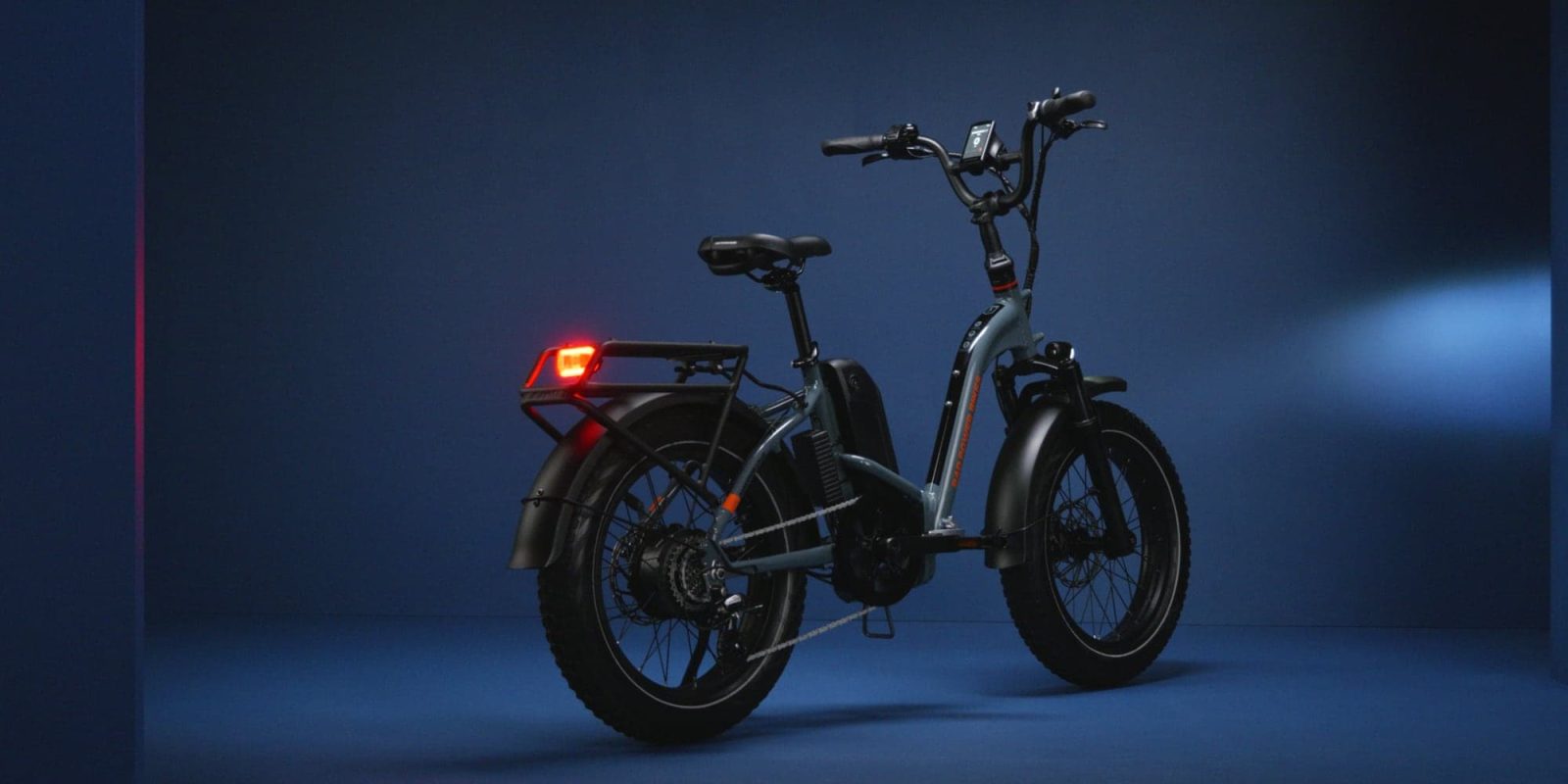
Rad Power Bikes, the Seattle-based electric bike maker that spent years at the top of the US e-bike sellers list, has occasionally rolled out major updates alongside the launch of a new model. But today the company is announcing the biggest shakeup in its history, simultaneously debuting two brand new e-bike models, two majorly updated e-bike models, and new battery technology that could help push the industry towards safer batteries. The Rad lineup is now welcoming the new Radster Road and Radster Trail e-bikes, as well as the RadWagon 5 and the RadExpand 5 Plus models.
As Rad Power Bikes CEO Phil Molyneux explained:
“With even greater versatility in our fleet and new, innovative e-bike battery technology that will elevate the industry in its entirety, we’re taking a significant step towards a world where e0bikes are built for everyone and have the power to do just about anything. Over the last two years, I have worked closely with our supply chain and quality leaders, overhauling our processes to make this next generation of e-bikes the very best for our riders. This launch marks the latest step we’ve taken to ensure the long-term success of both the e-bike space and Rad.”
In addition to the new e-bike models, Rad Power Bikes is unveiling its new Safe Shield Battery. The redesigned battery was developed to mitigate growing concerns over battery safety by incorporating thermal-resistant technology.
In addition to being UL-certified, the batteries use potted electronics construction to encapsulate the battery cells and better protect them from damage, moisture, and other disruptions that could cause short circuits.
The battery is rated at 48V 15Ah with 720Wh of capacity, making it not only the company’s safest and most advanced e-bike battery, but Rad’s largest capacity and longest-range battery to date.
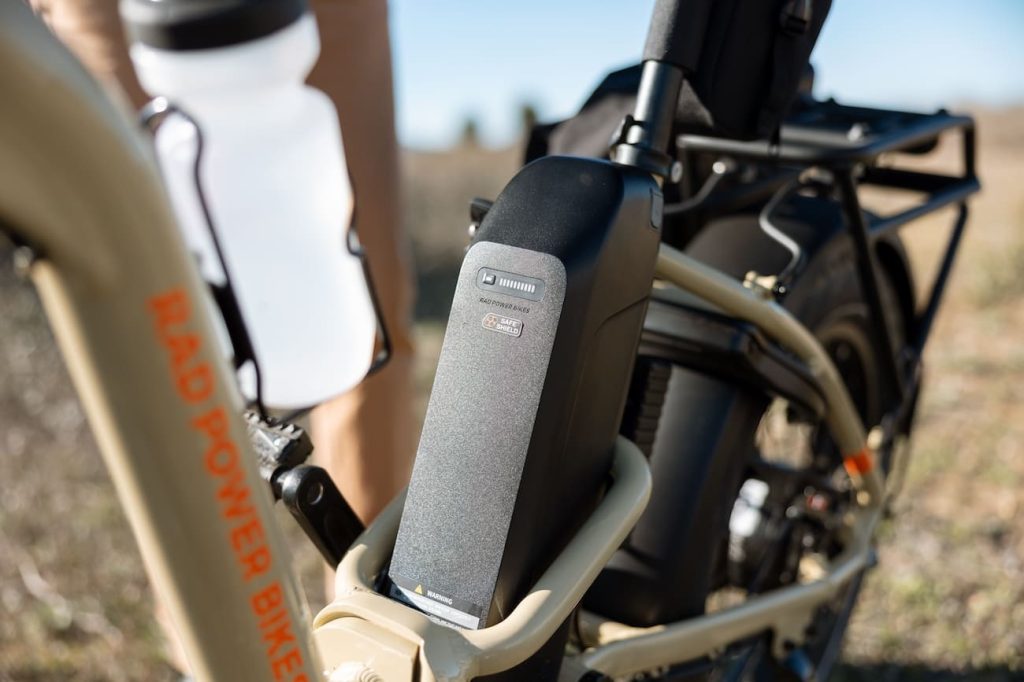
The Safe Shield Battery will debut on Rad’s newly unveiled e-bike models, but will also be available as an upgrade to many of the company’s existing e-bikes.
The first major addition to the Rad Power Bikes lineup announced today is the Radster family, which consists of the Radster Trail and the Radster Road models.
The two bikes share many similarities, differing largely in their use cases. The Radster Trail has wider 3-inch “mid-fat” tires, while the Radster Road has narrower 2.2-inch tires. The bikes also have slightly different frames and fenders that are each suited to different terrain and styles of riding.
Ultimately though, the Radster e-bikes are more similar than they are different. Each includes several new features, such as a new color LCD displays with USB-C charging port, rear turn signals, a torque sensor for more natural and responsive pedal assist, IPX6 water resistance, hydraulic disc brakes, NFC key-fob for locking the bike without a physical key, a thru-axle front wheel hub for stronger and more robust connection, a more powerful 200-lumen headlight, the new Safe Shield Battery, and come in two frame sizes of Regular and Large.
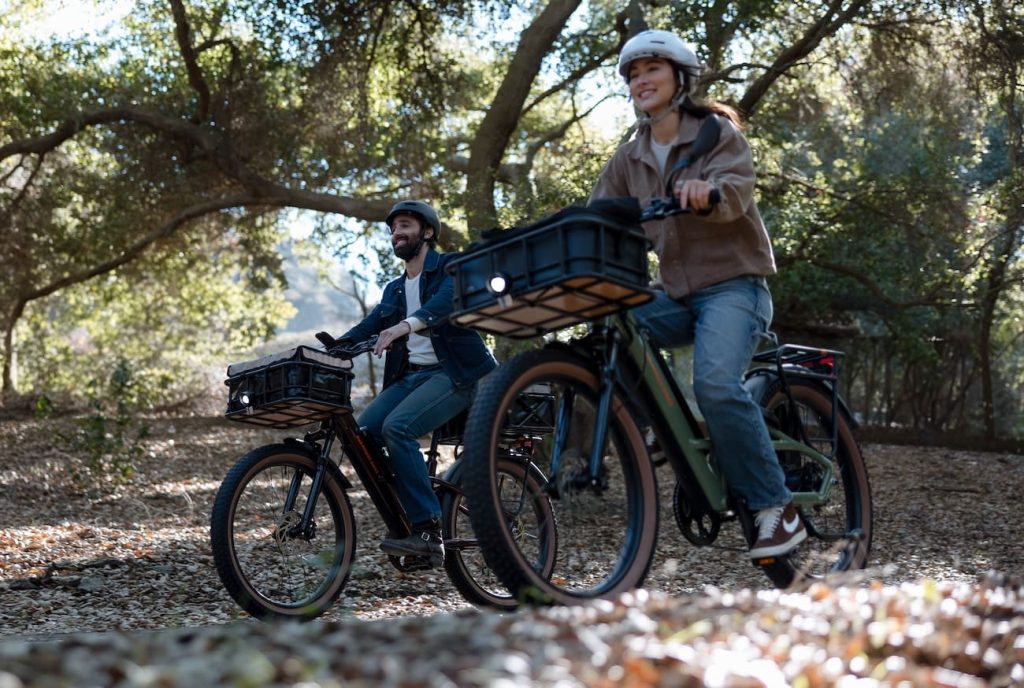

Perhaps the biggest update of all though is the inclusion of Class 3 capabilities. Both bikes come with multiple speed settings, allowing riders to reach up to 20 mph (32 km/h) on throttle operation, as well as two additional settings that can be unlocked to reach 25 mph or 28 mph (40 or 45 km/h) on pedal assist.
This marks the first time Rad has produced e-bikes that surpass the 20 mph Class 2 speed limit, ushering in a new higher-speed era for the company.
Both the Radster Road and Radster Trail are priced at US $1,999 and are available now for pre-order on the company’s website. Deliveries are expected to begin in April.
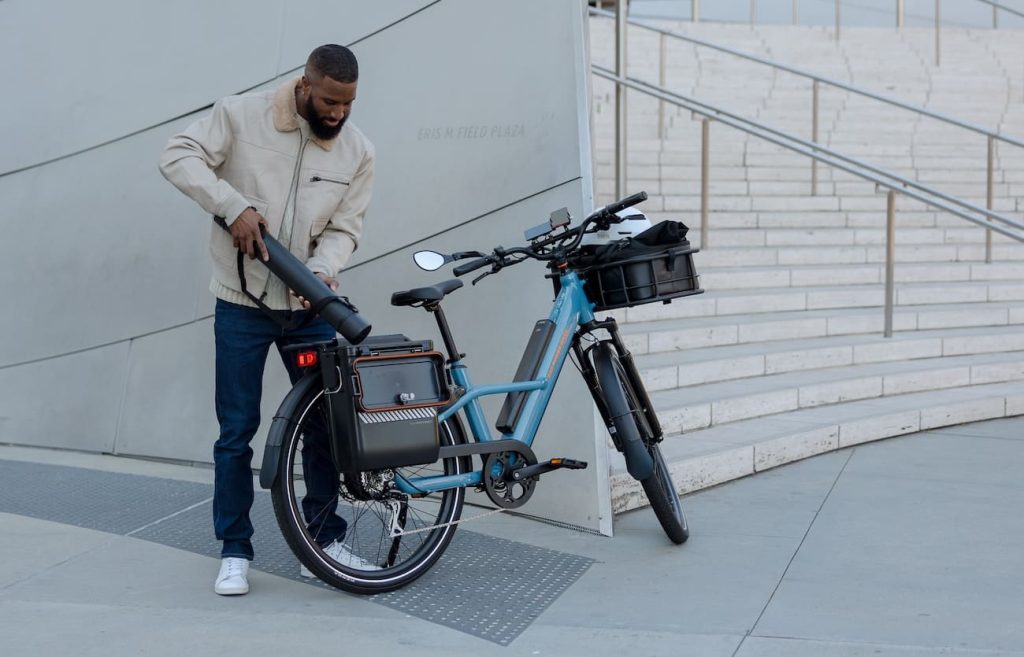

Rad Power Bikes also launched the new Rad Expand 5 Plus, which takes the brand’s entry-level folding model and upgrades it with several higher-end components and features in line with Rad’s more premium “Plus” family of e-bikes.
The Rad Expand 5 Plus also gets the new Safe Shield Battery, color LCD screen with USB-C charging port, IPX6 water-resistance, rear turn signals, hydraulic disc brakes, torque sensor pedal assist, 200-lumen headlight, and a bolt-on front wheel hub for a stronger connection.
The 20 mph (32 km/h) e-bike includes a 50mm travel hydraulic suspension fork, 20″x4″ fat tires, and features a folding design that makes it easier to transport in a vehicle or store in a tight space.
The Rad Expand 5 Plus is priced at US $1,899.
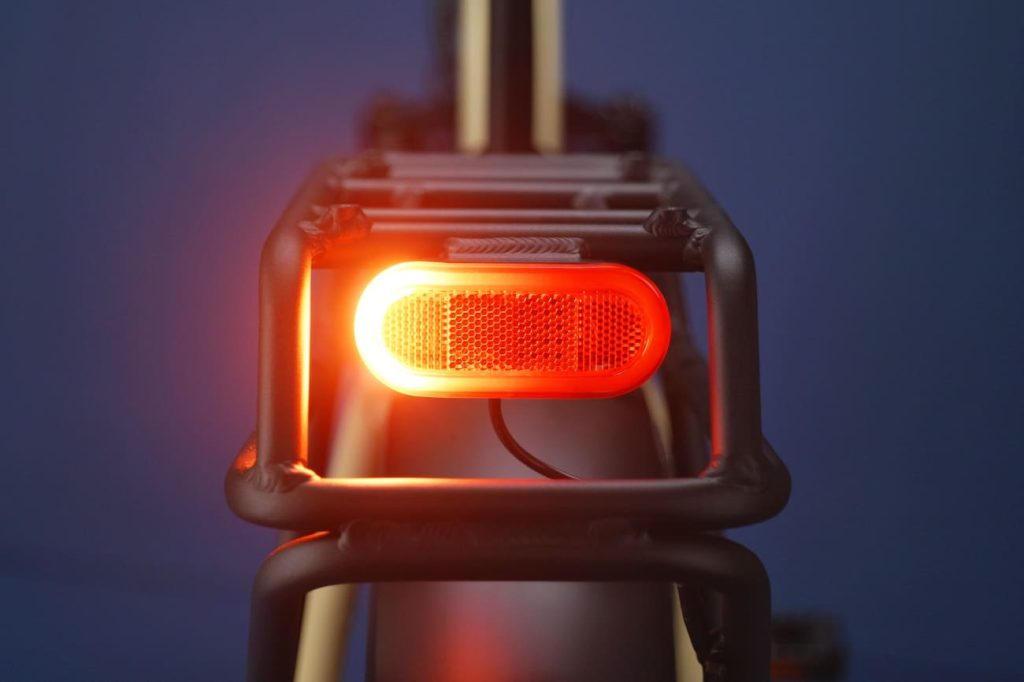
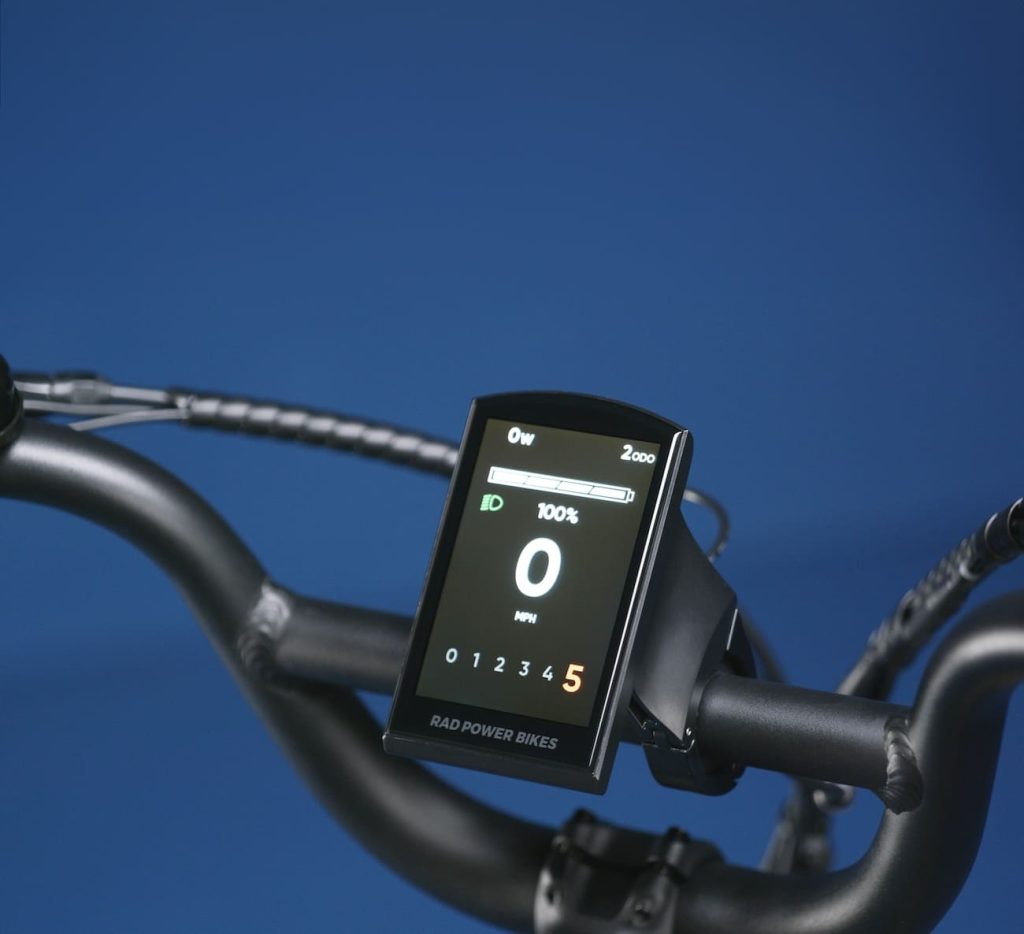


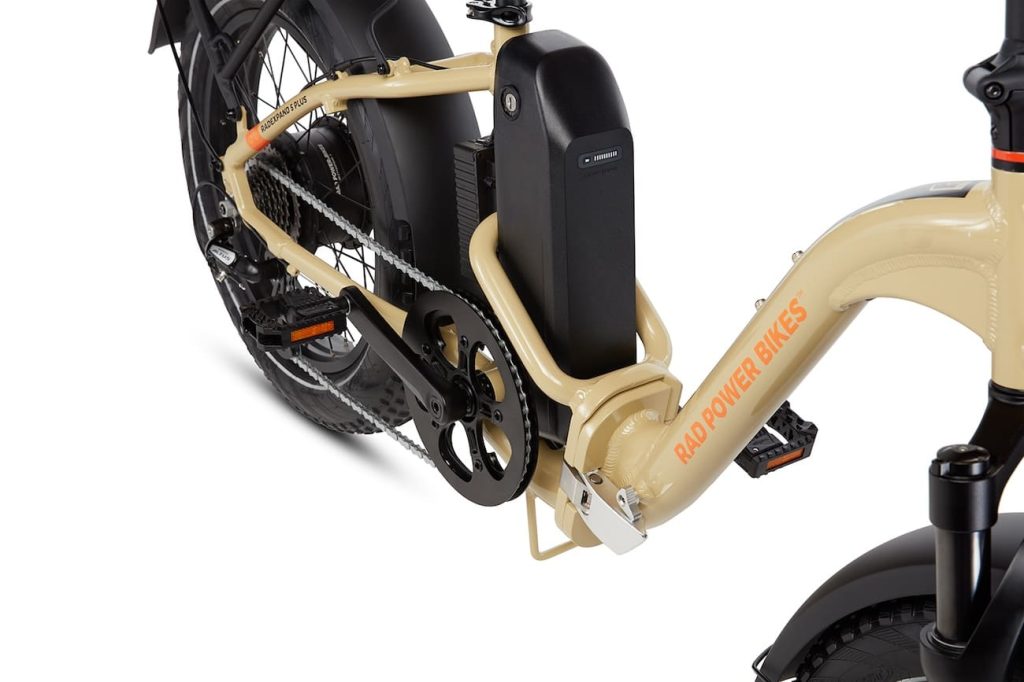
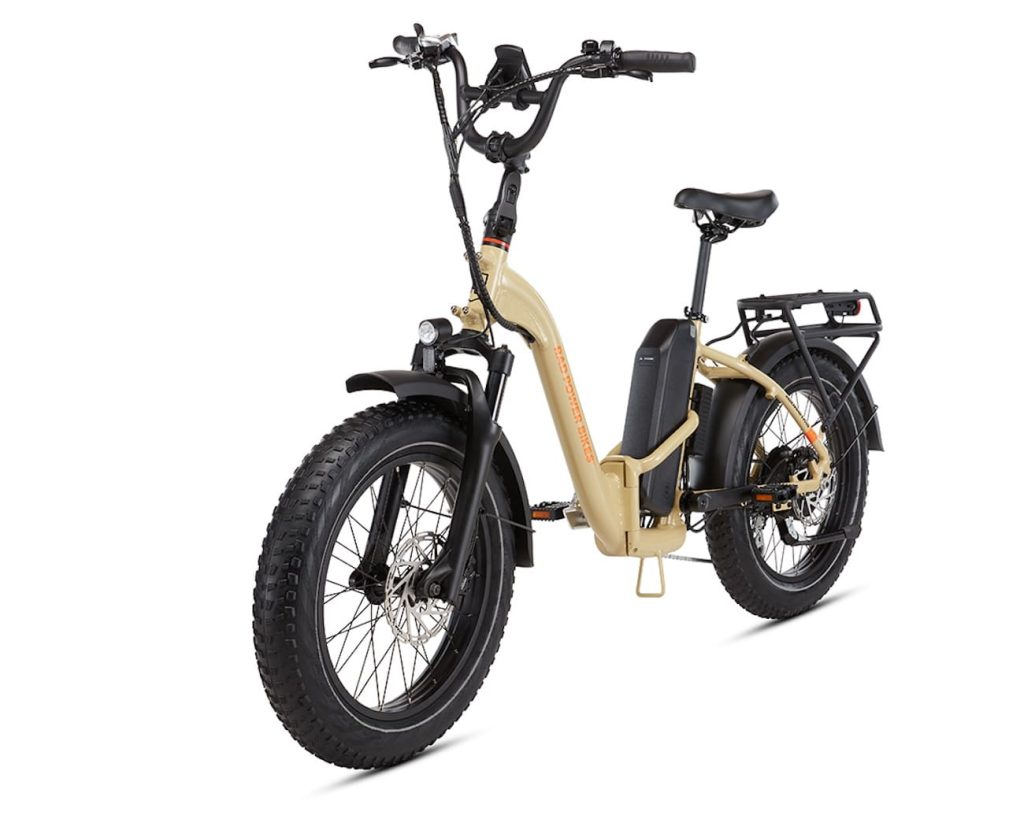
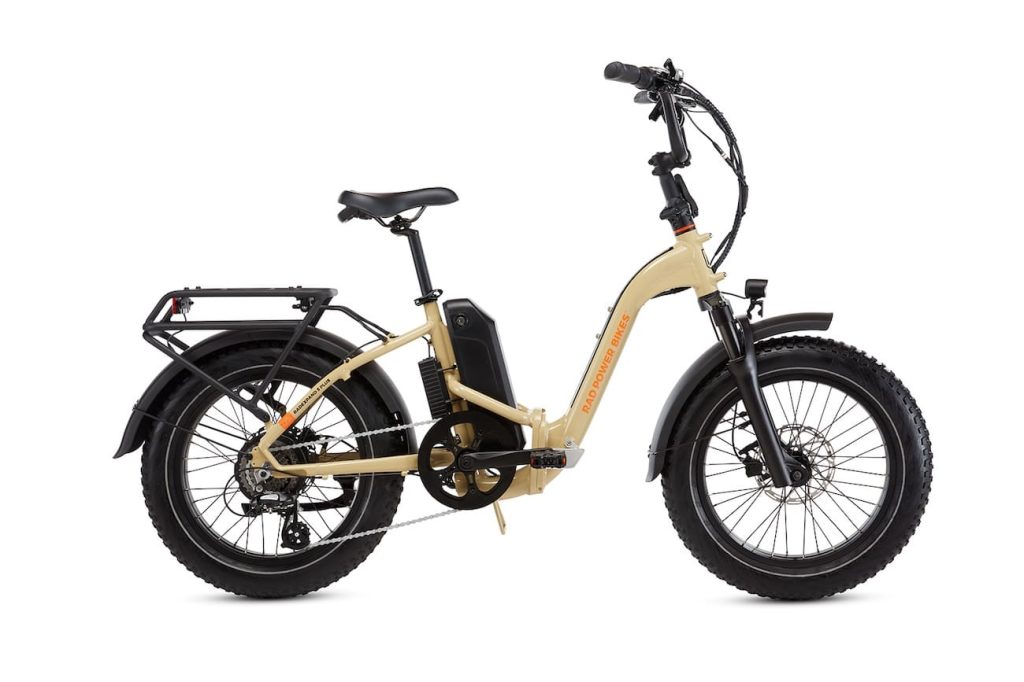
Rad Power Bikes also unveiled its newest cargo bike, the RadWagon 5.
The new model takes advantage of many of Rad’s feature upgrades, such as that new color LCD display with USB-C charging port, torque sensor pedal assist, IPX6 weather resistance, turn signals, thru-axle front wheel hub, and 3 top speed settings maxing out at 28 mph (45 km/h).
The bike is rated for up to 375 lb (170 kg) of cargo capacity, making it easy to carry passengers or plenty of extra cargo in back. The frame has also been updated with a more “condensed” design that also lowers the center of gravity to improve handling. New running boards and deck pads will also be available, offering a more stylish and comfortable ride for rear passengers.
The RadWagon 5 is priced at US $2,199 and is already available for pre-order on Rad’s website ahead of April deliveries.

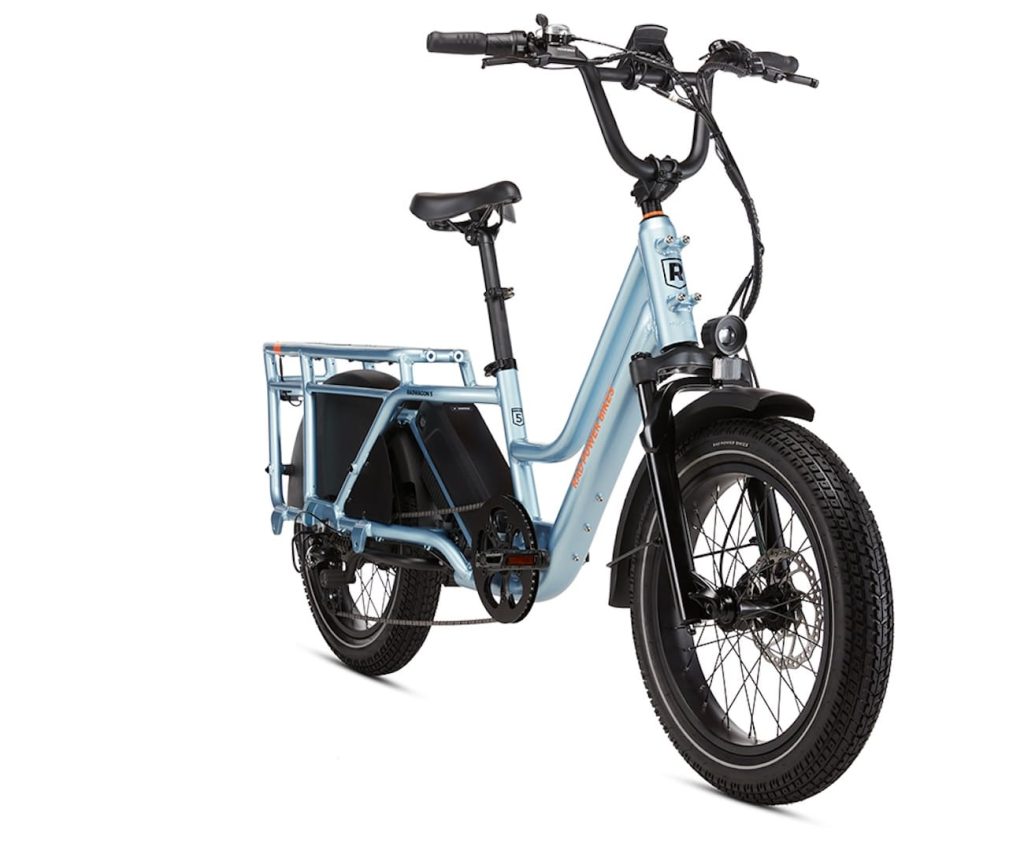
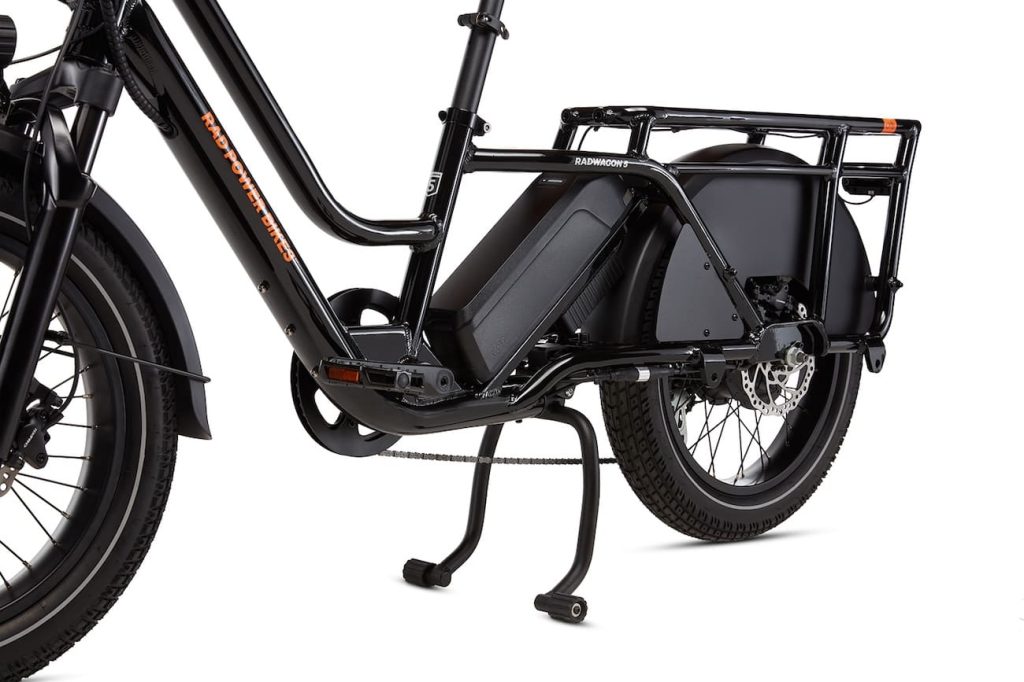
Electrek’s Take
Wow, there’s a lot to unpack here. I’ll try to hit these many different points succinctly.
Rad Power Bikes Safe Shield Battery: I think it’s hard to overstate how pivotal this will be for the e-bike industry. Potted batteries are the single safest way to build e-bike batteries. To be frank, UL certification is nice but it doesn’t mean what most people think it does, and several UL-listed batteries have met a fiery end. UL-listing can give added peace of mind, but as we’ve heard from battery experts before, it’s not that hard to achieve and doesn’t mean the battery is actually that safe. Potted batteries are the true best practice for physical safety, and they’re almost non-existent outside of Luna Cycle’s potted e-bike batteries. So today’s debut from Rad is major news.
Class 3 speed: Wow, it’s about time. I wasn’t sure I’d ever see Rad finally get the need… the need for speed. I think their hand was basically forced here, though. Similar to how throttle-less e-bikes are hamstrung in sales among American riders, Class 2 e-bikes are starting to get passed over by many American customers who prefer the option of riding faster when and where appropriate.
New electronics: It’s cool to see major electronic updates like NFC key fob for unlocking, color display with USB-C device charging, rear turn signals, etc. None of this is groundbreaking, and to be honest we’ve seen it all (perhaps except the USB-C device charging) on cheaper e-bikes for years, but it’s great to see Rad hop on board with what is presumably a better quality version of many of these components we’ve seen before. The big new thing though is the torque sensor, which is truly great to see. This is another feature that Rad took its sweet time on, but now it’s here and I think many riders will be discovering just how much nicer a good torque sensor can be.
New mechanics: Hydraulic disc brakes now being employed basically across the entire higher-end Rad line is big, as well as the new more robust front axles – even if they’re largely there because the lawyers like them now. The new frame on the RadWagon 5 looks interesting, I’m excited to review all of these to see how they feel.

To sum up my feelings, here’s what I’d say. The spec sheets all look incredible. The prices are high, but that’s Rad’s new MO. It appears the company doesn’t want to compete on price, which is probably a smart move when Lectric is dominating there and plenty of fly-by-night e-bike companies pop up every week with cheap new e-bikes.
Instead, Rad’s new strategy appears to be competing on substance, namely with higher-end parts and more sophisticated design. That means higher prices, and the jury is still out on how the e-bike market at large will respond to these new models. It’s a gamble since Rad spent years leading in the entry-level price segment before it found itself getting more elbows in its ribs from all the other competition crowding into that segment. So now that the company is aiming for a spot higher up on the quality ladder, we’ll have to see if Rad sticks the landing.
FTC: We use income earning auto affiliate links. More.






Comments